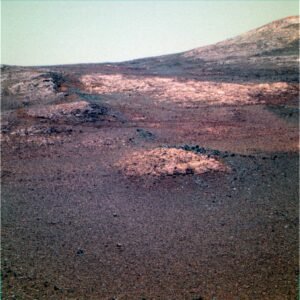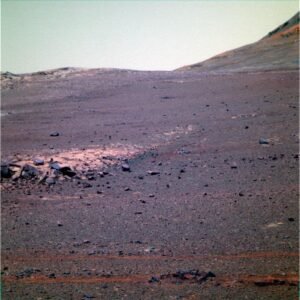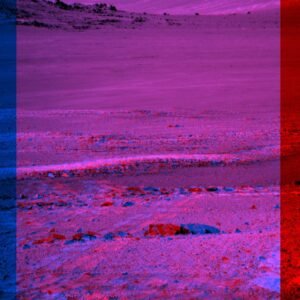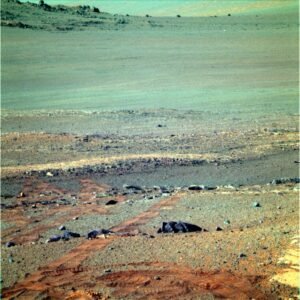Latest Posts
NASA: organic molecules on Mars (again?)
by Giorgio Bianciardi, Vice President UAI and Astrobiologist – University of Siena…and finally also “authoritative voices” intervene This post has been automatically translated. See the original post here.
Opportunity on “stand by” during sandstorm
A sandstorm, which began just over a week ago, has outgrown North America, endangering the safety of the Opportunity rover.At the moment the rover, which depends on sunlight to recharge its batteries, has suspended all activity to save energy while waiting for the storm to end.It is certainly not the first time that Opportunity faces a similar challenge, but in this case we are just at the beginning of the “storm season” and the magnitude of this storm does not promise anything good! This post has been automatically translated. See the original post here.
NASA discovers ancient organic material and “mysterious” methane on Mars
(Read also https://www.jpl.nasa.gov/news/news.php?feature=7154) NASA has called yesterday a press conference to announce the amazing discovery of ancient organic material on Mars as well as the discovery of seasonal cycles of methane emissions related to the hottest periods of the Martian year!I am more and more amazed to see how NASA treats the public opinion as a bunch of forgetful people to whom they can repeat “amazing” announcements, even years later, as if they were absolute news. For those who think mine is just a little pointless polemic I recommend reading this article from 2014:“Mars methane detection and variability at Gale crater”. https://authors.library.caltech.edu/52526/7/Webster.SM.pdf Maybe I’m just a little mischievous, but I get the impression that NASA is screaming for attention to raise the necessary funds for the next missions to Mars, or maybe the competition from ESA is forcing them to disclose more than they would have liked…What do you think? 😉 This post has been automatically translated. See the original post here.
Layered deposits in the south pole of Mars
ExoMars TGO took this photo of the south polar cap of Mars on May 13 of this year.Please read the description given by ESA regarding the composition of the ice visible in this photo.While NASA has always stated that Mars’ south polar cap is composed primarily of dry ice, here ESA is talking exclusively about water ice!Here is a small demonstration of how important it is to be able to verify a discovery through different and independent sources. This post has been automatically translated. See the original post here.
NASA press conference regarding new scientific results obtained on Mars
Tonight at 6pm Italian time….We’ll see what they have to announce. 😉 This post has been automatically translated. See the original post here.
The Martian laboratory of Curiosity is active again
After an initial enthusiasm, then partially denied, finally the team of Curiosity was able to refine the technique to collect samples produced by the drilling instrument. Finally the internal analysis laboratory (SAM) has received enough material to perform the mineralogical analysis whose results will arrive soon… This post has been automatically translated. See the original post here.
Opportunity Sol 5102, June 1, 2018
Beautiful view of the Martian horizon, which in this photo appears a bit bluer than in the previous Sol photo (see https://www.facebook.com/PianetaMarte.MdM/photos/a.1625578140858706.1073741828.1612043482212172/1718513361565183/). We will probably see a lot of variation in weather conditions in the coming months…. This true-color photo was obtained by combining three images taken with narrowband filters in the three basic colors taken between 09:41:34 UTC and 09:44:30 UTC by Opportunity’s Pancam.The original images (especially in the green and blue) have a high level of “noise” and so I applied a noise filter to all three colors to eliminate spurious dots (“despeckle” filter). RGB HD image processed: https://image.ibb.co/hvKkNd/Oppy_Sol5102_1.jpg Original BN images: Red (735nm with 20nm bandwidth)09:41:34 UTC13:55:01 LTST https://mars.nasa.gov/mer/gallery/all/1/p/5102/1P581112772EFFD2FCP2395L2M1.HTML Green (535nm with 20nm bandwidth)09:44:17 UTC13:57:39 LTST https://mars.nasa.gov/mer/gallery/all/1/p/5102/1P581112935EFFD2FCP2395L5M1.HTML Blue (432nm with 32nm bandwidth)09:44:30 UTC13:57:52 LTST https://mars.nasa.gov/mer/gallery/all/1/p/5102/1P581112948EFFD2FCP2395L7M1.HTML This post has been automatically translated. See the original post here.
Opportunity Sol 5101, May 31, 2018
Finally a piece of Martian sky framed by Opportunity’s Pancam!Its hue tends more to greenish than blue and is definitely milky anyway.In fact, Mars is approaching perihelion, period in which its global average temperature is about 20°C higher than at aphelion because of the ellipticity of its orbit around the Sun.This fact has great repercussions on the general climate of Mars, to the point that in the periods in which it is more distant from the Sun (aphelion) is very frequent the formation of clouds due to condensation of water vapor present in the atmosphere. Vice versa, in the hottest moments (perihelion), the relative humidity is lowered (not to be confused with the absolute humidity that tends to rise instead) and increases the strength of the winds, raising more dust in the atmosphere up to cause (sometimes) sandstorms that can also get to obscure the entire planet. This photo was obtained by combining three images taken with narrowband filters in the three basic colors taken between 07:36:42 UTC and 07:39:17 UTC by Opportunity’s Pancam.The original images (especially in the green and blue) have a high level of “noise” and so I applied a noise filter to all three colors to eliminate the spurious dots (“despeckle” filter). RGB HD image processed: https://image.ibb.co/fMS7YJ/Oppy_Sol5101_1.jpg Original BN images: Red (735nm with 20nm bandwidth)07:36:42 UTC12:31:59 LTST https://mars.nasa.gov/mer/gallery/all/1/p/5101/1P581018885EFFD2FCP2393L2M1.HTML Green (535nm with 20nm bandwidth)07:39:03 UTC12:34:16 LTST https://mars.nasa.gov/mer/gallery/all/1/p/5101/1P581019026EFFD2FCP2393L5M1.HTML Blue (432nm with 32nm bandwidth)07:39:17 UTC12:34:30 LTST https://mars.nasa.gov/mer/gallery/all/1/p/5101/1P581019040EFFD2FCP2393L7M1.HTML This post has been automatically translated. See the original post here.
Opportunity Sol 5099, May 29, 2018
The beautiful glimpse of the Martian panorama present in the previous photo (see https://www.facebook.com/PianetaMarte.MdM/photos/a.1625578140858706.1073741828.1612043482212172/1716487521767767/) this time in 3D to be observed with the appropriate red and blue glasses.This photo was obtained by combining two images taken with a narrow band red filter at 09:33:09 UTC from both lenses from Opportunity’s Pancam. 3D HD image: https://image.ibb.co/mASboJ/Oppy_Sol5099_3_D.jpg Original BN images: Pancam, left lens with Red filter (735nm with 20nm bandwidth)09:33:09 UTC15:42:19 LTST https://mars.nasa.gov/mer/gallery/all/1/p/5099/1P580853082EFFD2FCP2390L2M1.HTML Pancam, right lens with Red filter (754nm with 20nm bandwidth)09:33:09 UTC15:42:19 LTST https://mars.nasa.gov/mer/gallery/all/1/p/5099/1P580853082EFFD2FCP2390R2M1.HTML This post has been automatically translated. See the original post here.
Opportunity Sol 5099, May 29, 2018
A beautiful glimpse of the Martian landscape in true color in which you can see the tracks dug by the wheels of Opportunity itself that expose the sub-surface layer of brick red soil. The rest of the panorama shows shades ranging from green to turquoise and pink to orange.This photo was obtained by combining three images taken with narrowband filters in the three basic colors taken between 09:33:09 UTC and 09:35:43 UTC by Opportunity’s Pancam.The original images (especially in the green and blue) have a high level of “noise” and so I applied a noise filter to all three colors to eliminate spurious dots (“despeckle” filter). RGB HD image processed: https://image.ibb.co/fWVvXd/Oppy_Sol5099.jpg Original BN images: Red (735nm with 20nm bandwidth)09:33:09 UTC15:42:19 LTST https://mars.nasa.gov/mer/gallery/all/1/p/5099/1P580853082EFFD2FCP2390L2M1.HTML Green (535nm with 20nm bandwidth)09:35:29 UTC15:44:35 LTST https://mars.nasa.gov/mer/gallery/all/1/p/5099/1P580853222EFFD2FCP2390L5M1.HTML Blue (432nm with 32nm bandwidth)09:35:43 UTC15:44:49 LTST https://mars.nasa.gov/mer/gallery/all/1/p/5099/1P580853236EFFD2FCP2390L7M1.HTML This post has been automatically translated. See the original post here.



